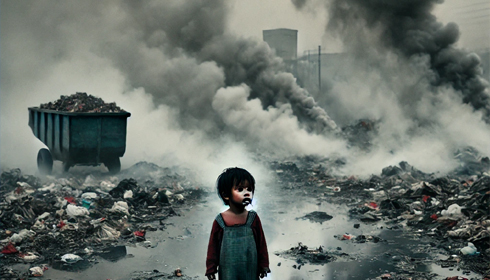
Childhood Lost: Unchecked Chemical Pollution Fuels Rising Health Crisis
Countries worldwide need to quickly implement regulations for chemicals and chemical products similar to those for prescription drugs, according to a recent report from the Consortium for Children’s Environmental Health published in the New England Journal of Medicine. The study, written by top experts like Boston College epidemiologist Philip Landrigan, MD; environmental law scholar David Wirth; biologist Thomas Chiles; and epidemiologist Kurt Straif, highlights that not taking action could lead to increasing rates of chronic illnesses in children.
There are about 350,000 types of manufactured chemicals, mixtures, and plastics in global inventories. Even though these substances are common and there are increasing worries about environmental pollution and human exposure, they face very little legal and policy regulation. The report highlights the immediate need for new laws that focus on public health instead of unchecked chemical production.
"New laws require that chemicals are not considered safe until they harm health," the authors state. “Chemicals and chemical-based products should only be allowed in markets if their manufacturers can prove through thorough, independent testing before they hit the market that they are safe at expected exposure levels.”
Chemical manufacturers and brands selling chemicals should regularly monitor their products after they hit the market to spot any long-term health issues, just like prescription drugs are regulated. The report is the result of a two-year research project by 17 top scientific institutions in the U.S. and Europe. It aims to create a unified strategy to reduce the rising rates of chronic diseases in children around the world.
Non-communicable diseases (NCDs) are now the main reason for illness and death in children. The report shows that their occurrence has increased significantly over the last fifty years, with clear connections found between synthetic chemicals and different children's health issues.
The increase in childhood diseases and disorders in recent decades highlights how environmental and lifestyle factors affect children’s health. Childhood cancer cases have risen by 35%, likely due to more exposure to harmful chemicals and pollutants. At the same time, male reproductive birth defects have increased significantly, leading to worries about the lasting impact of endocrine-disrupting chemicals. Neurodevelopmental disorders impact one in six children, with autism spectrum disorders occurring in one out of every 36, pointing to the possible effects of neurotoxic substances in everyday settings.
Poor air quality and exposure to air pollutants have greatly affected respiratory health, leading to a threefold increase in paediatric asthma rates. The rise in paediatric obesity has led to a significant increase in type 2 diabetes in children and adolescents, connecting changes in diet and exposure to harmful chemicals with metabolic issues. Research indicates that some chemicals lower IQ levels, resulting in lasting cognitive and economic effects. The growing health issues require immediate action to protect children from harmful synthetic chemicals.
Fossil fuels like gas, oil, and coal, which primarily fuel the growth of synthetic chemical production, have exacerbated environmental pollution and increased human exposure. Since 1950, production has grown significantly and is expected to grow even more by 2050. The absence of strict regulations lets synthetic chemicals enter markets without proper evaluation of their health effects. Remarkably, researchers have tested less than 20% of these chemicals for toxicity, and even fewer have evaluated their impact on infants and children.
Poor regulation affects not just wealthy countries but also low- and middle-income nations like India. Here, industrial growth and rapid urban development have caused more environmental pollution and health issues. In low- and middle-income countries, children face significant risks because of poor regulations, limited healthcare access, and exposure to unregulated chemicals in their food, air, and water. India faces a serious problem as cities such as Delhi and Bangalore deal with significant air and water pollution, increasing the health risks from synthetic chemicals.
To tackle these challenges, we need a fundamental change in chemical regulation, both nationally and globally. New laws are needed to require strict safety and toxicity testing for chemicals before they can be sold, making sure that only safe substances are allowed for general use. Using chemical footprinting, similar to carbon footprinting, will be important for evaluating and reducing the environmental and health effects of chemicals during their entire lifecycle. Policymakers can create focused strategies to reduce risks by measuring their impacts.
This change involves using safer chemicals by cutting down on fossil fuel-based materials and adopting sustainable manufacturing methods. Promoting eco-friendly options will reduce pollution and lead to a more sustainable industrial future. Real change requires solid policy reform to create a strong legal framework for managing chemicals. This involves national rules that ensure strict monitoring and an international agreement to promote worldwide adherence and collaboration in reducing the risks associated with synthetic chemicals.
“Pollution from synthetic chemicals and plastics is a major challenge we face today,” Landrigan states. “It is getting worse quickly. Uncontrolled growth in the production of fossil and carbon-based chemicals puts the world’s children at risk and jeopardises humanity’s ability to reproduce.
If regulations aren't put in place soon, the rapid spread of synthetic chemicals could seriously harm public health, especially for children in low- and middle-income countries who are already facing greater risks. The report urges policymakers to focus on health and environmental safety instead of just industrial growth to protect future generations from the risks of synthetic chemical exposure.